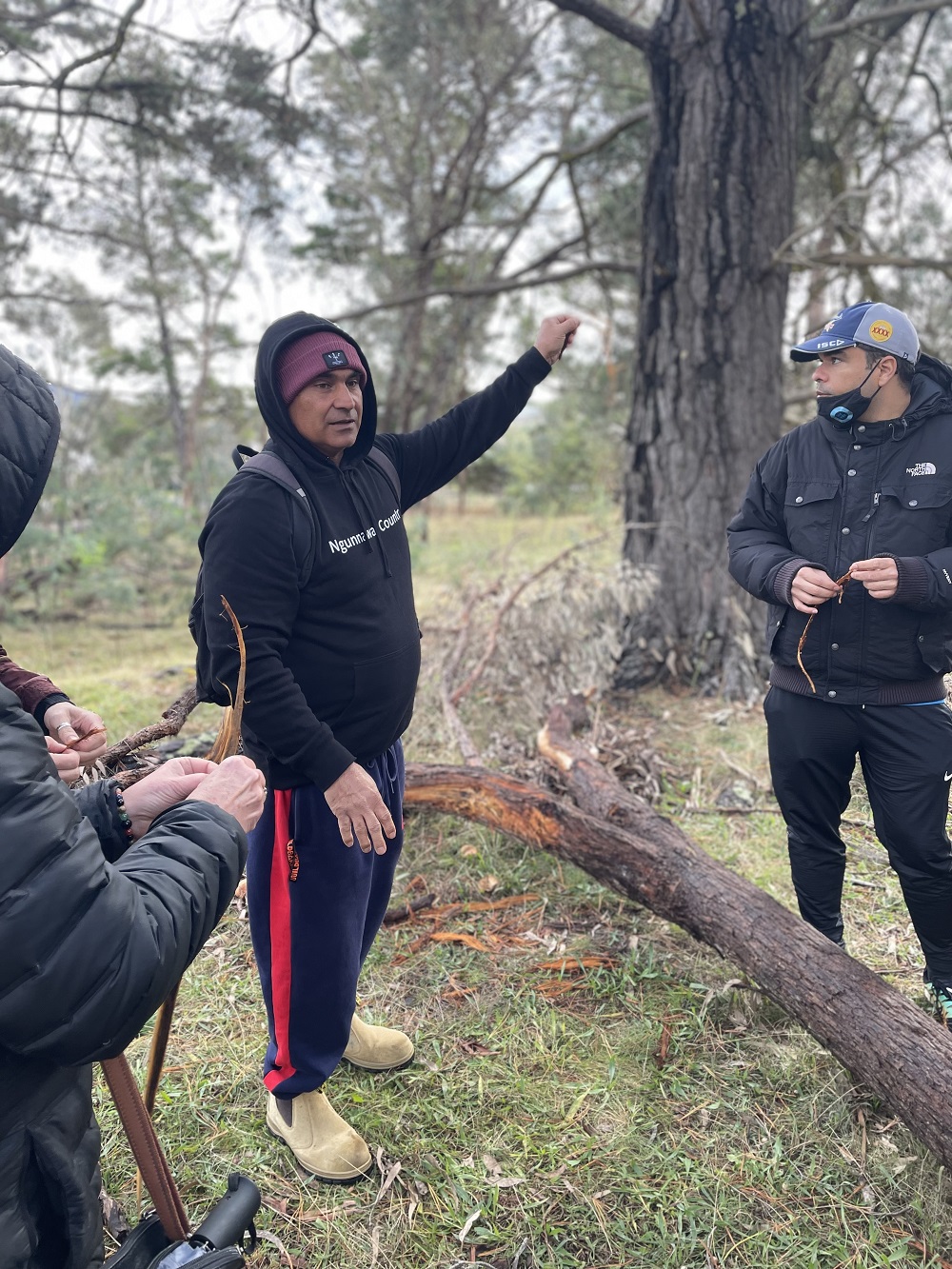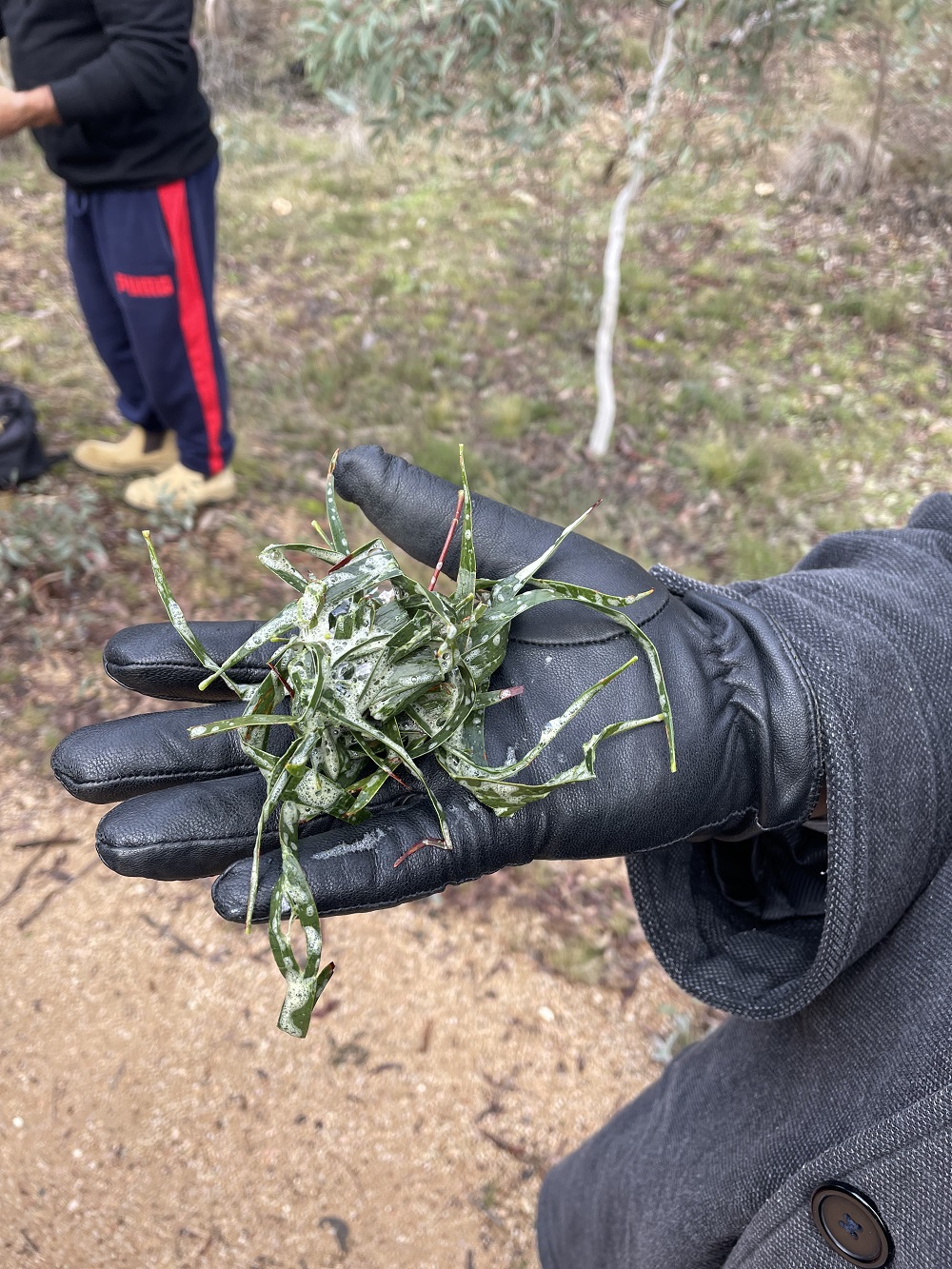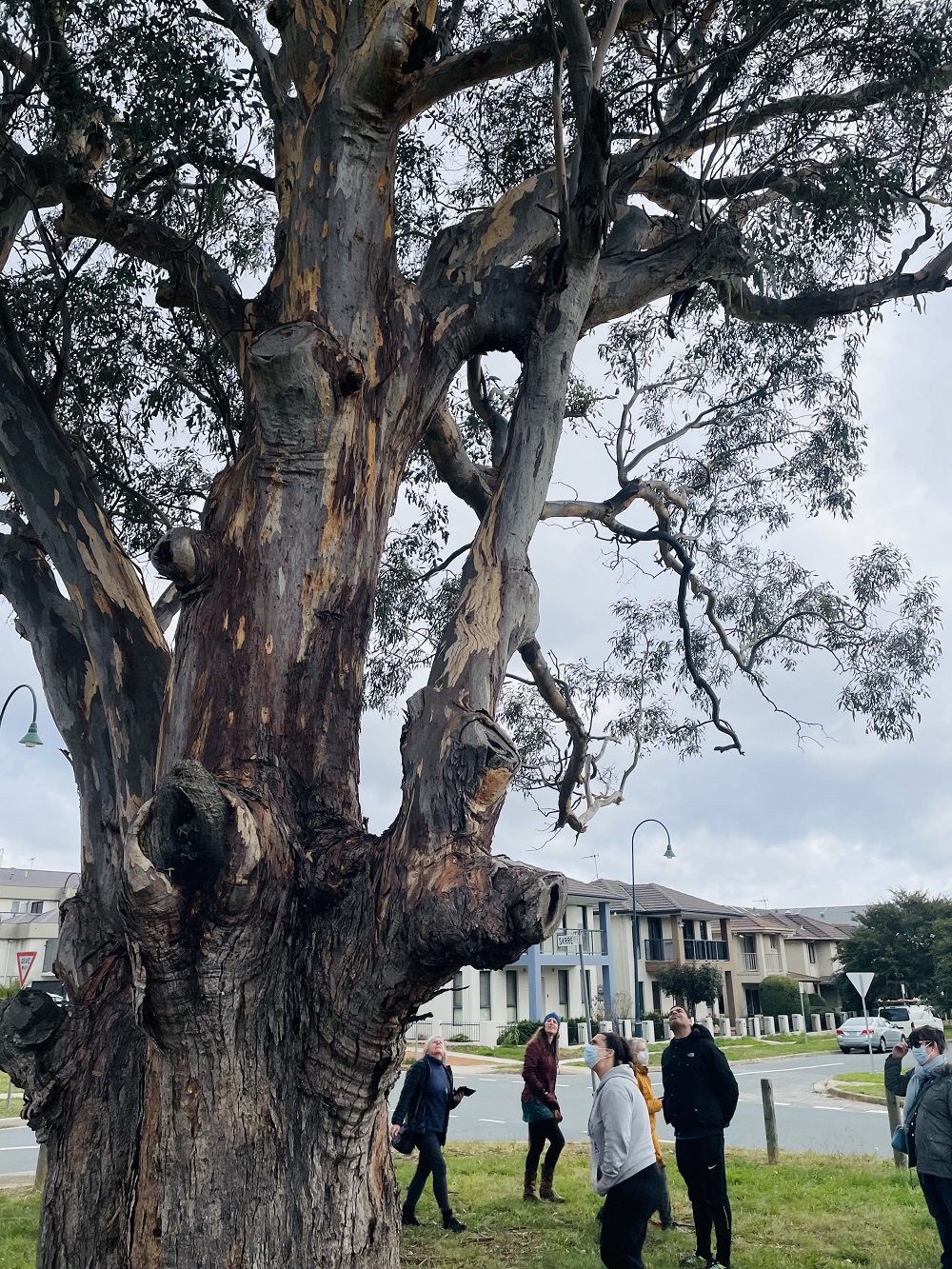Suzanne Lazaroo
5 July 2022: Faculty of Health staff at the University of Canberra recently enjoyed a local tour aimed at broadening and deepening their understanding of Ngunnawal culture – and came away amazed at the many important cultural sites just minutes from the University’s Bruce campus.
With both academics and clinical staff participating, the tour was led by Richie Allan, a Ngunnawal Lore Keeper and Director of the Traditional Owners Aboriginal Corporation.
“Programs like this are very important, because they give non-Indigenous people a way to see our culture through our own eyes,” Mr Allan said.

Organised by Associate Professor Dr Rachel Bacon, the tour was supported by a Faculty Teaching Innovation Generating Education Research Grant.
“We hoped that this experience would contribute to our own learnings, and better equip us to support the inclusion of Indigenous perspectives and pedagogies within the health curricula,” she said.
“For me, it is so important to recognise that there are over 250 Aboriginal nations and language groups in Australia, and that I am – and UC is – on Ngunnawal Country. I need to see the Ngunnawal people and Country as my teachers.”
Encompassing sites in nearby Gungahlin, the tour included stops at several ring tree sites, part of a vast navigational network; the Bonner Canoe Tree, where Mr Allan indicated where the bark of a tree was carved out to make a canoe; and a Ngunnawal stone tool site, where stone tools can still be found on the ground.
All sites visited were culturally safe, with the group having permission from the Ngunnawal people to enter them.
The group also stopped at the Mulligans Flat Woodland Sanctuary, the largest single Box-gum Grassy-woodland area managed for conservation in Australia.
Here, Mr Allan shed light on Indigenous fire management practices, talked about the uses of specific plants – including some that provide sustenance and protection from snakes – and spoke on native wildlife like the Eastern Bettong, driven to extinction on the mainland for nearly a century, before being successfully reintroduced to Mulligans Flat from 2012.

“I came away from the tour with a much better understanding of Ngunnawal culture, thanks to Richie being so generous with his knowledge – which has always been my experience with Aboriginal people,” said Clinical Associate Professor Dr Angie Fearon.
“I think we all have a really strong responsibility to acknowledge and protect, look after and share local culture – and the more we celebrate Indigenous culture, the more it is lived and protected.”
Dr Fearon found particular resonance between her work and the Aboriginal practice of shaping ring trees, and plans to embed that knowledge into her teaching.
“I can see the similarities with how we straighten bent spines with a brace – for instance, in an adolescent with scoliosis,” she said. “In fact, the symbol of orthopaedics is a tree tied to a stake. I’ll be incorporating this knowledge of how some Aboriginal people shape trees into my teaching, speaking about how trees change shape when particular forces are applied to them.”

For Associate Professor Dr Holly Northam, the tour drove home the fact that Ngunnawal culture and knowledges are very much present and accessible – and should figure more strongly into decision-making processes around the country.
“The realisation of how present and alive Ngunnawal culture is has given me great hope for elevating Aboriginal voices, as we walk the path towards Reconciliation together,” she said.
Dr Bacon says that knowledge and respect for the Ngunnawal culture are crucial, and provide the strength-based approach required to develop an Indigenised curriculum.
“I came away with so many learnings from Richie – and I was very encouraged by the feedback from participants about their own learnings, and what they took away with them,” she said.
“As a dietitian, I want to increase my understanding of Ngunnawal foods and to consider how this knowledge can be incorporated into the teaching within the Nutrition and Dietetics courses.”


